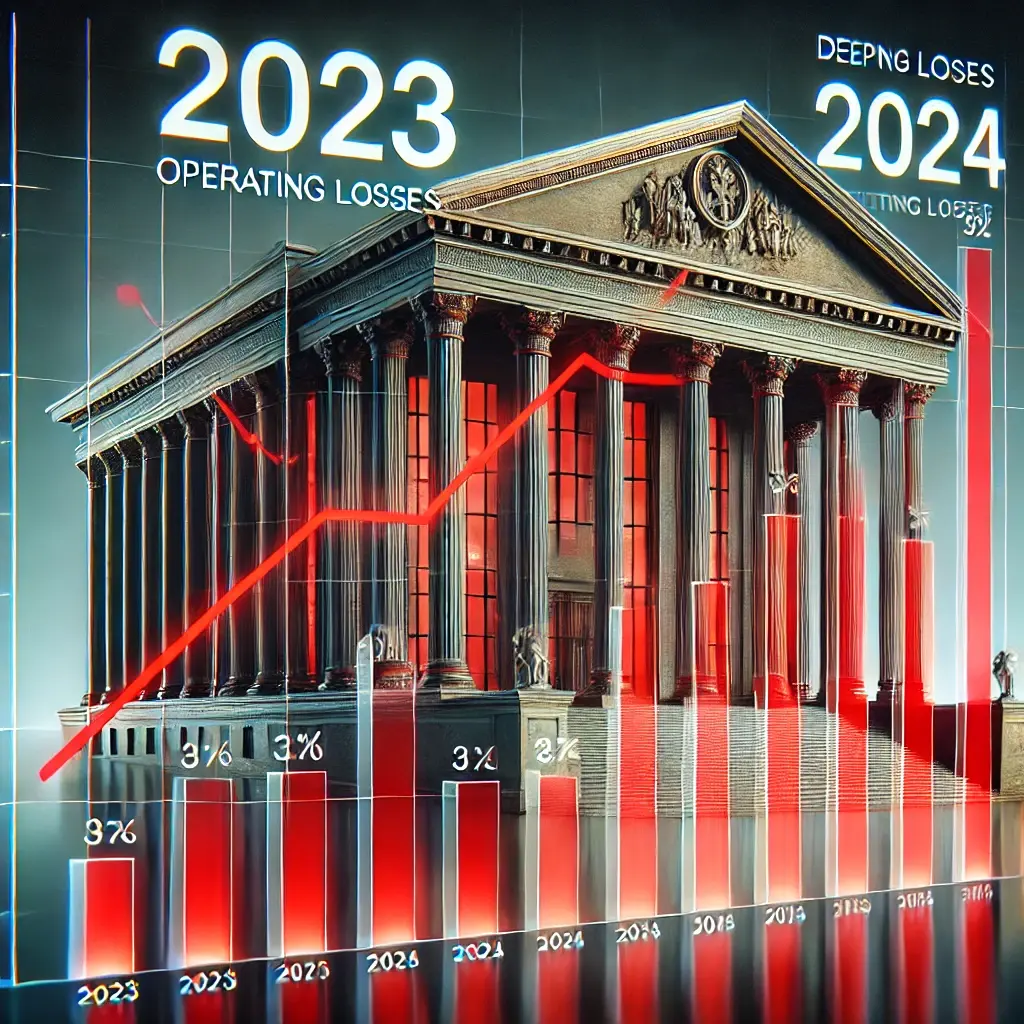
The Federal Reserve is facing an unprecedented financial downturn, with back-to-back operating losses that have raised concerns about its monetary policy and financial stability. According to the latest data, the Fed reported a - $77.6 billion operating loss in 2024, following a - $114.3 billion loss in 2023. Since Q4 2022, cumulative losses have now reached a staggering - $224.4 billion—a stark contrast to the decades of operating profits it recorded before 2022.
This significant financial shift, visualized in the chart, highlights a major turning point for the Fed, as it grapples with rising interest payments and declining revenue from its balance sheet holdings.
What’s Causing the Fed’s Losses?
1. Rising Interest Expenses
One of the main drivers of these losses is the Fed’s obligation to pay interest on reserves held by commercial banks and money market funds. As interest rates have surged, these payments have ballooned into hundreds of billions of dollars.
2. Declining Interest Income from Treasuries & MBS
At the same time, the Fed’s income from its holdings of U.S. Treasuries and Mortgage-Backed Securities (MBS) has declined. This is because the central bank has been actively shrinking its balance sheet through Quantitative Tightening (QT)—selling off bonds it purchased during the pandemic stimulus period.
3. Surging Unrealized Losses on Bond Holdings
Adding to the Fed’s woes, its unrealized losses on its bond portfolio jumped $112 billion in 2024, bringing total unrealized losses to a massive $1.06 trillion. This is due to rising bond yields, which reduce the market value of bonds the Fed previously bought at lower interest rates. While these are paper losses unless sold, they highlight the financial strain on the central bank.
The Big Picture: Why It Matters
The Fed’s financial troubles have serious implications:
- No More Payments to the U.S. Treasury: Traditionally, the Fed sends its excess profits to the U.S. government, helping reduce the federal deficit. However, with ongoing losses, these payments have completely stopped.
- Impact on Monetary Policy: While the Fed’s ability to print money means it won’t go bankrupt, persistent losses may influence future decisions on interest rates and balance sheet management.
- Credibility & Market Confidence: The central bank’s ability to control inflation while managing financial stability is under scrutiny. If losses continue, there could be pressure on the Fed to adjust its policies.
Despite these financial setbacks, the Fed remains committed to its mandate of controlling inflation and ensuring economic stability. However, with continued losses, a shrinking balance sheet, and growing unrealized losses, the central bank faces difficult decisions ahead.
Investors, policymakers, and market analysts will be watching closely to see how the Fed navigates these financial challenges in the coming months.
Disclaimer:
The information provided in this article is for educational and informational purposes only. It should not be considered financial or investment advice. Readers are encouraged to conduct their own research and consult with financial professionals before making any investment decisions.




